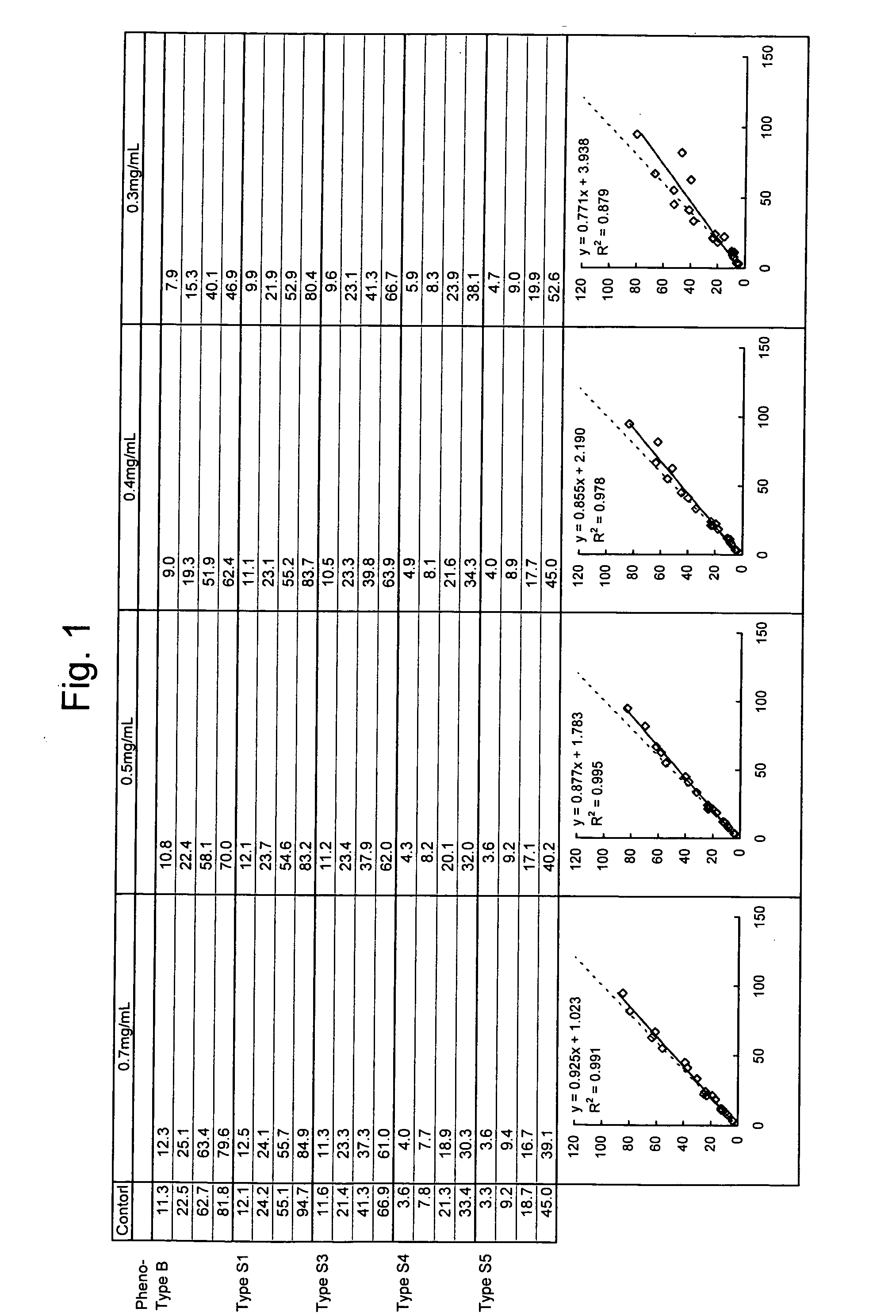Immuno-nephelometry of lipoprotein (a) and reagent therefor
a technology of immunonephelometry and lipoprotein, which is applied in the field of immunonephelometry of lipoprotein (a) and the reagent therefor, can solve the problems of measurement value deviation, difference in reactivity with a certain antibody, etc., and achieve high correlation
- Summary
- Abstract
- Description
- Claims
- Application Information
AI Technical Summary
Benefits of technology
Problems solved by technology
Method used
Image
Examples
example 1
[0041] Change in Measurement Value Obtained using Reagents having Varying Concentrations of Latex (Amounts of Antibody) (Correlation with Control Method (ELISA))
[0042] A rabbit anti-human lipoprotein(a) polyclonal antibody (available from DAKO) was mixed with latex particles (available from Sekisui Chemical) and heated at room temperature for 60 minutes and subsequently in a thermostat bath at 60° C. for 50 minutes, followed by cooling in cold water for 20 minutes to thereby conduct sensitization. The polyclonal antibody was sensitized in an amount of 0.14 mg per mg of the latex particles. The sensitized latex particles were dispersed at a concentration of 0.5% by weight in 0.17 M glycine buffer, pH 7, to give a rabbit anti-human lipoprotein polyclonal antibody dispersion.
[0043] Dispersed suspensions of the latex particles sensitized with the rabbit anti-human lipoprotein(a) polyclonal antibody were prepared so that the final concentrations of the antibody in second reagents were ...
example 2
[0049] Change in Measurement Value Obtained using Reagents having Varying Concentrations of Arginine (Correlation with Control Method (ELISA))
[0050] A dispersed suspension of latex particles sensitized with a rabbit anti-human lipoprotein(a) polyclonal antibody was prepared in the same way as Example 1.
[0051] The dispersed suspension of the latex particles sensitized with the rabbit anti-human lipoprotein(a) polyclonal antibody was prepared so that the final concentration of the antibody in a second reagent was brought to approximately 0.7 mg / mL. Arginine as a basic amino acid was added to the first reagent so that the final concentrations of arginine in reaction solutions were brought to 10%, 15, and 17%, respectively (the concentration in the second reagent is 30%).
[0052] Measurement conditions and samples to be measured were the same as Example 1.
[0053] As a result, the samples having measurement values that deviate from a regression line determined by a correlation with enzy...
PUM
 Login to View More
Login to View More Abstract
Description
Claims
Application Information
 Login to View More
Login to View More - R&D
- Intellectual Property
- Life Sciences
- Materials
- Tech Scout
- Unparalleled Data Quality
- Higher Quality Content
- 60% Fewer Hallucinations
Browse by: Latest US Patents, China's latest patents, Technical Efficacy Thesaurus, Application Domain, Technology Topic, Popular Technical Reports.
© 2025 PatSnap. All rights reserved.Legal|Privacy policy|Modern Slavery Act Transparency Statement|Sitemap|About US| Contact US: help@patsnap.com



